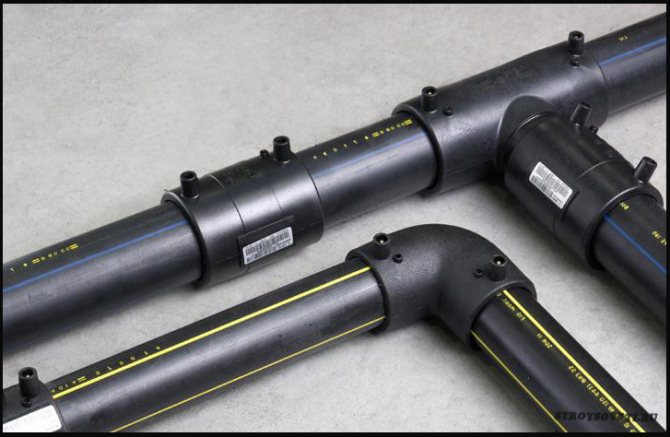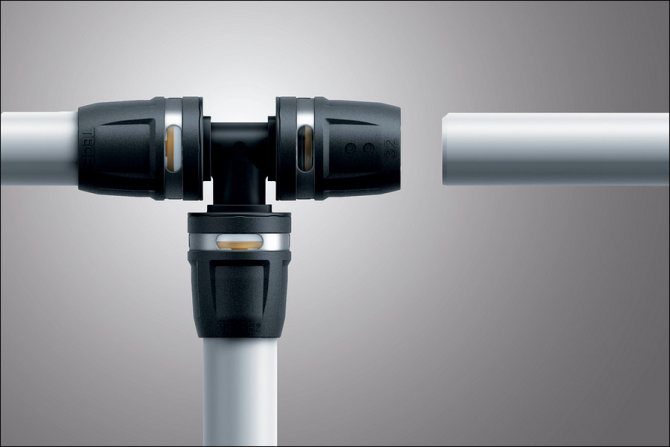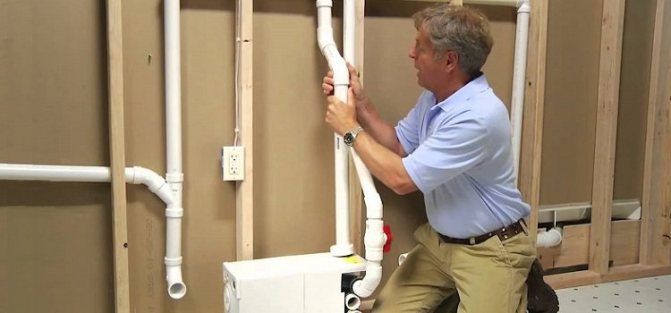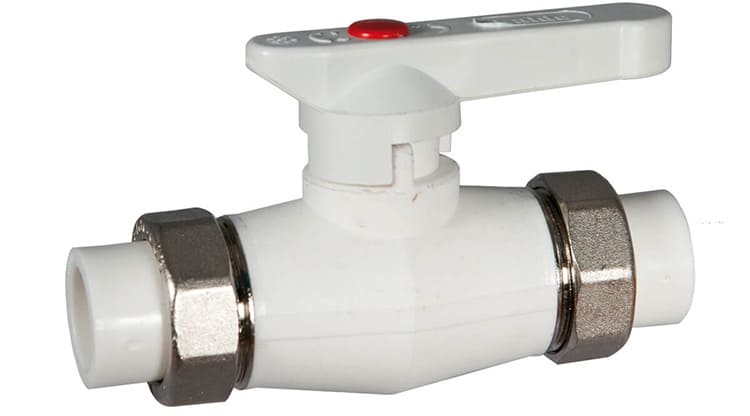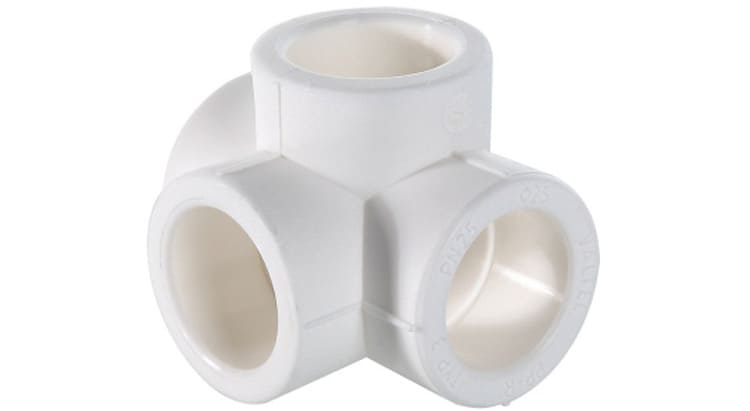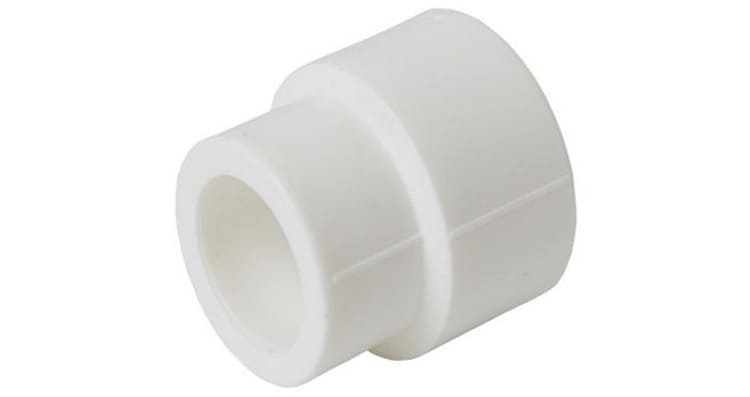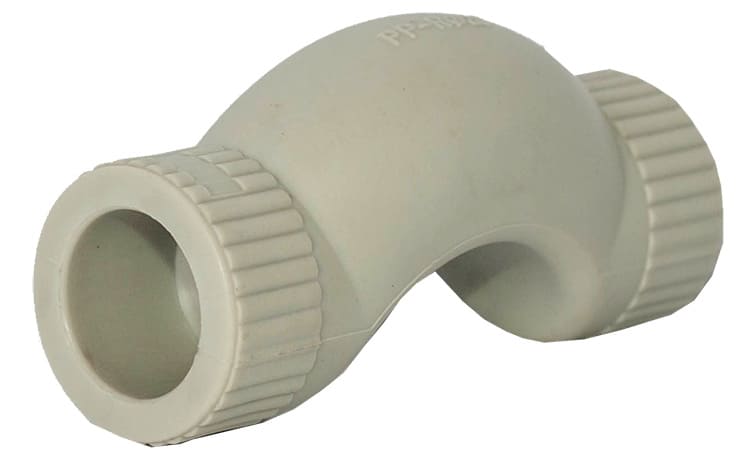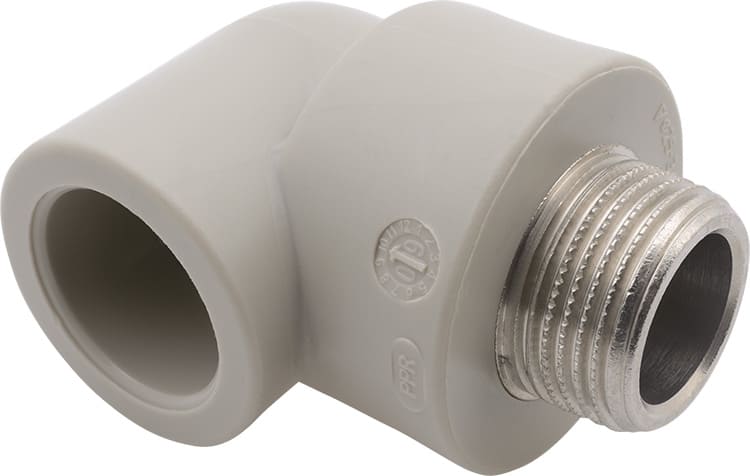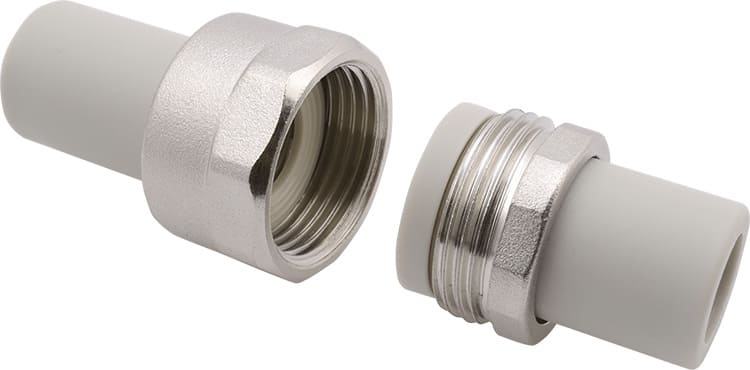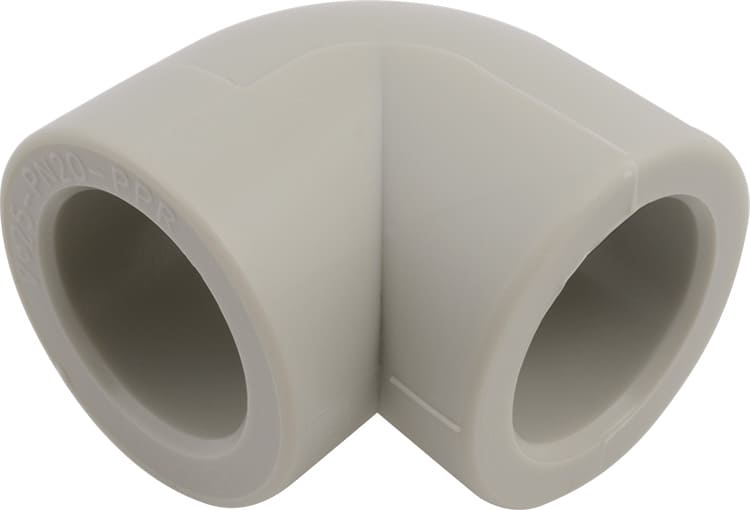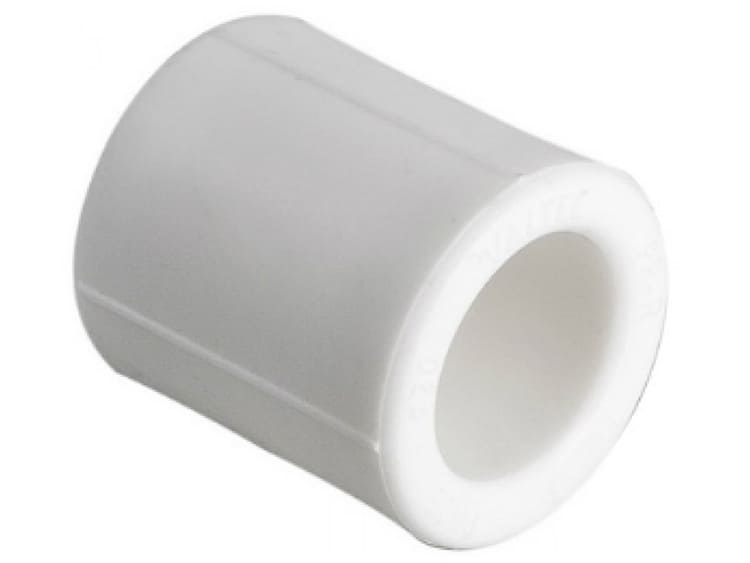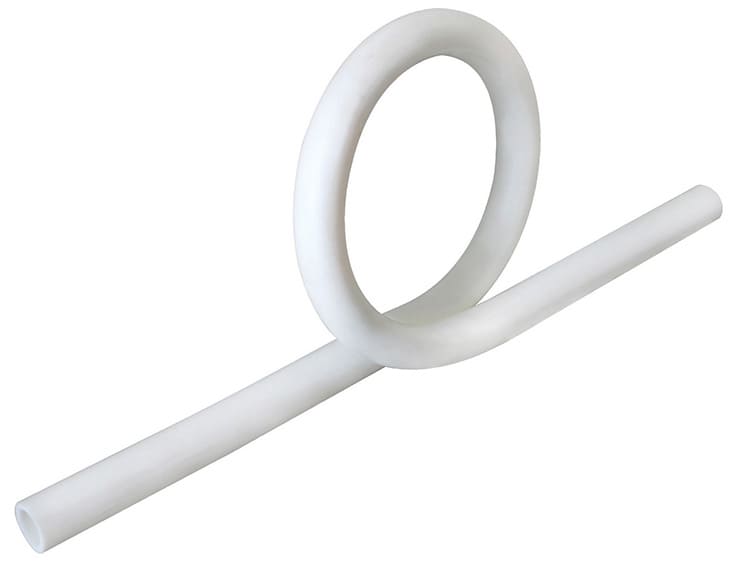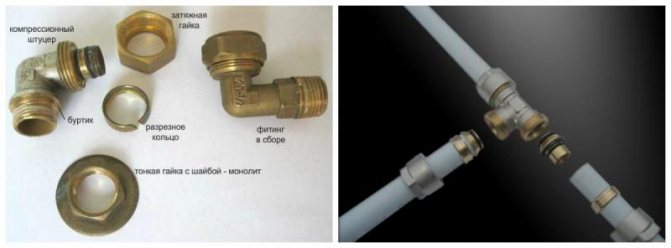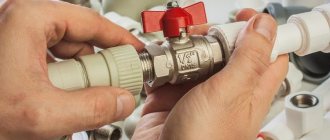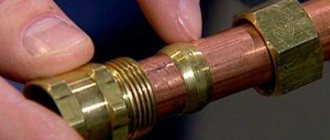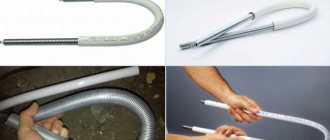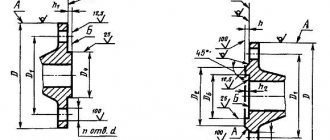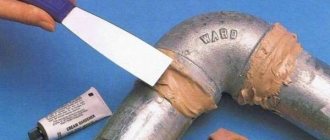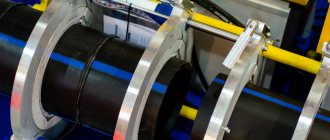Any building material has its own service life, at the end of which it is necessary to replace the deteriorated products. Pipes are no exception. Modern polypropylene pipes are so easy to install that they allow you to replace the entire heating system or water supply without much effort. In order to determine how to connect polypropylene pipes, just read the article.
A couple of the main advantages of such pipes:
- Strength. They are able to withstand pressure surges in the system and high temperatures without transforming their features.
- Durability.
- Corrosion resistant.
- Ease of installation. To install pipes, it is enough to heat them with a special device and connect using fittings. The connection of a polypropylene pipe with an iron pipe is also carried out using fittings.
Tools
Ease of installation is the first and main advantage of polypropylene pipes, in fact, additional materials and tools will be required.
- polypropylene pipes,
- pencil,
- clips for fixing pipes,
- roulette,
- couplings,
- Merilon heaters,
- corners. We need products of two types: at 45 and 90 degrees,
- MRV-eared. It is used for fixing the mixer,
- MRV and MRN outputs with iron thread,
- soldering iron,
- scissors for plastic products.
Installation
How to correctly install the system using polypropylene pipes, so that the result is durable, we will consider below. If you still have doubts about your skills, or you do not dare to independently replace products, then forget about it forever. The fact is that, in addition, the incorrect soldering of such pipes can be corrected with couplings.
Advice! When choosing polypropylene products, be guided by the diameter of the dilapidated pipes, which will help to significantly simplify the installation of the entire structure.
The classical method of connecting pipes by thermal diffusion
Before starting the installation, it is necessary to choose the optimal method of connecting polypropylene pipes that most closely matches the project. Arrangement of heating or water supply systems at the stage of construction work or repair (modernization) of an existing system imply different methods of installation and different types of pipe connections.
The physical properties of polypropylene pipes allow them to be connected at the molecular level, heating the surfaces to be joined. The strength and tightness of the connection is ensured by fittings. To implement a high-quality connection of polypropylene pipes, you will need a special tool and practical skills in working with polypropylene pipes.

The method of soldering pipes using a special iron is used by professionals and home craftsmen.
Tools and equipment
First of all, it is necessary to prepare the pipes for installation. A high-quality connection of polypropylene pipes is ensured by accurate - at an angle of 90 degrees - cutting the end edge of the pipe, and observing the heating interval. A prerequisite is compliance with safety measures when working with a tool, which must be checked before starting work. Any detected malfunction can negatively affect the quality of the connection, and it is simply dangerous to work with a broken tool.
For cutting pipes to the required length, in the ideal case, special scissors are used, designed for cutting polyethylene, polypropylene and metal-plastic pipes. A hacksaw is also used for metal, in this case the edge of the cut of the pipe is "decorated" with the inevitable fringe of the sawn material, and before connecting the polypropylene pipes with fittings, it is necessary to clean the end edge of the pipe.
A high-quality connection for polypropylene pipes using the thermal diffusion method will be difficult to implement without a special welding device. More often it is called "pipe soldering iron". A distinctive feature of a professional tool is the presence of heating indication and temperature control. When working with pipes of small - up to 40 mm - diameters, it is more convenient to use a pipe-shaped soldering iron, it is easier for them to mount connections in hard-to-reach places, for example, in the space between walls or for mounting a tee or a cut-in fitting. If, when performing repair work, the question arises of how to connect a polypropylene pipe without welding, use the "cold welding" method.
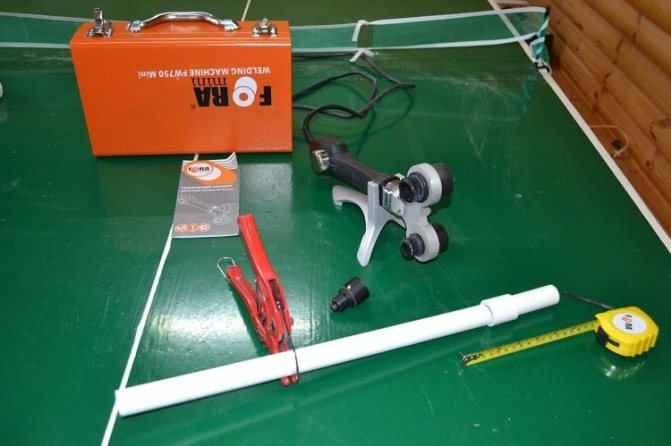

To obtain a high-quality connection of pipes using the thermal diffusion method, you need to use only specialized tools.
A special tool such as a schweiger is also used: he is cleaning the end cut of the pipe to remove the reinforcing layer. This is necessary in order to realize a high-quality connection when soldering.
Compression-type connections require crimping pliers (professional precision equipment) and special fittings supplemented with crimping washers. The method requires a professional approach, the cost of good fittings cannot be low. The connection with sliding fixing elements will require a special tool (expander), with which the inner surface of the pipe is prepared, and, accordingly, a tool for tightening the crimping element onto the fitting.
It will take some determination to insert the fitting and the pipe into the soldering iron nozzle at the same time. It is necessary to maintain the temperature interval corresponding to the diameters of the connected elements - from 5 seconds for pipes with a diameter of 16 mm, up to 12 seconds for a 40 mm pipe;
Important! All connections of polypropylene pipes with other types of pipes are provided using combined fittings. For connection to a metal pipeline, a fitting, supplemented with a metal threaded assembly, is used. Installation takes place first on a metal pipe, after ensuring the tightness of the threaded fitting, a polypropylene pipe is soldered.
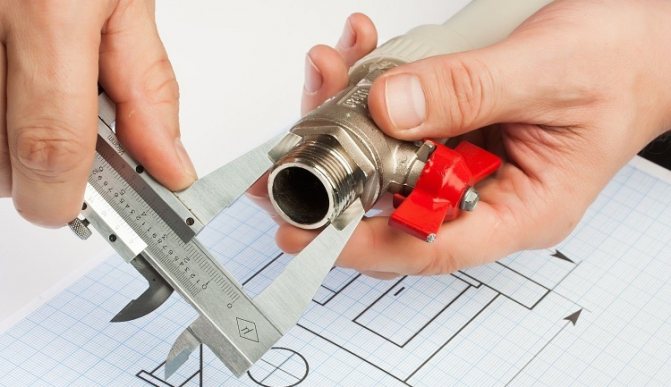

To connect the elements of the pipeline to each other, fittings of the appropriate diameter must be used.
During the connection of heated connections, it is unacceptable to disrupt the alignment of the connection, or turn the connected elements. It is considered good form and a sign of a real master to carry out tests with maximum pressure at the end of the assembly of the system.
Diffusion welding
Polypropylene products can be joined by several methods, but the most popular is diffusion welding. For reliable fastening of products, fittings are used here: couplings, angles and adapters.
Polypropylene pipes in the cold water supply system are guaranteed to last up to 50 years. For about a quarter of a century, they will be able to serve in the arrangement of warm water supply. Remember that the life of these products depends on the pressure and temperature of the water in the structure.
The polypropylene pipeline has a huge margin of safety, allowing it to withstand all transformations in the system. So, high pressure and low temperature indicators will not affect the duration of the products in any way. The same effect on polypropylene pipes will have a low pressure with a high temperature. But high pressure and temperature indicators, recorded in the system at one moment, will shorten the life of the products by 5-7 years.In domestic pipelines, there are no excessive loads that are talented to damage the pipes, so there is no need to worry about this.
Advice! Polypropylene pipes, for which permanent joints were used, cannot be subsequently disassembled.
Threaded connection
Heating and water supply schemes at the household level are assembled using a hand-held welding machine. To connect to a heating or plumbing appliance, when docked with metal, an adapter sleeve is used. One side of it assumes a brass thread, and the other is soldered with a polypropylene pipe. Ease of installation, speed of dismantling for routine repairs or maintenance of units and assemblies obliged by polypropylene are achieved due to dismountable parts. These include the following fittings:
- Detachable connection American. Polypropylene manufacturers offer two product options. In the first case, the collapsible connection ends on both sides with pipes with a pipe diameter, and in the second - with sleeves for soldering the pipe. Metal surfaces are joined in the fitting through a paronite or rubber gasket.
- Split clutch American. The mounting element contains, on the one hand, a threaded part (internal or external), and on the other, a branch pipe or sleeve for welding. American for polypropylene pipes is made in two variations: a straight piece or an angular American.
- Union nut fitting. There are two types: the nut is joined to the external thread through a gasket or with a cone (used when tying collectors).
The American connection, as a rule, accompanies the installation of cranes. This combination of shut-off valves and detachable fitting achieves the autonomy and maintainability of individual sections of the pipeline. Leaks of installed networks occur mainly on the packing of threaded connections, therefore, their number is sought to be reduced. For this purpose, manufacturers have launched the production of polypropylene fittings. The following details are popular:
- polypropylene ball valves;
- coarse filters;
- check valves;
- straight-through valves for external and concealed installation;
- radiator valves with American: straight and angled.
WATCH THE VIDEO
How to connect polypropylene pipes in this or that case, the decision is made depending on the purpose of the installed system, the diameters of the joined products, as well as the availability of funds and capabilities. It is better if specialists will connect the polypropylene pipelines. They guarantee the stable operation of the assembled systems due to the reliability of the welding performed.
Categories of polypropylene pipes
All polypropylene pipes are divided into:
- PN 25. The pipe withstands 2.5 MPa. It is used in heating systems and warm water supply systems.
- PN 20. A versatile pipe, talented to withstand 2 MPa. It can be used for cold and warm water supply, provided that the system temperature is not more than 80 ° C. A polypropylene pipe of this category belongs to products of great strength, since its inner part is reinforced with foil.
- PN 16. Pipe for low pressure heating systems and cold water supply.
- PN 10. Thin-walled pipe that can withstand a pressure of 1 MPa. It is widely used in underfloor heating structures (but at temperatures no higher than 45? C) and cold water supply (up to +20? C).
A video with good examples of the use of pipes of a certain category will help determine such a difficult choice:
Fittings types
Connect two pipes made of different materials (iron and polypropylene) using special fittings. They also assist in connecting plumbing fixtures to steel fittings. Inserts on fittings are necessary for reliable fastening of products and they can be brass or chrome-plated.How to apply them correctly and where is better, we will not touch on at the moment, but consider only their varieties - these are:
- crosspiece,
- combined tees,
- couplings,
- angular ball valves and straight,
- plug,
- squares at 45 and 90 degrees,
- elbow (triple or for connecting monotonous pipes),
- pass-through water outlet,
- transition. It has an external thread or plastic type DG,
- welded saddle,
- combined couplings,
- combined elbows for pipes,
- combined elbows for devices.
Butt and socket welding of polypropylene pipes
Tubular products of interest to us, which are characterized by low weight, ease of machining and installation, as well as relatively low cost, are connected by detachable and non-detachable methods. The latter is understood as welding carried out according to one of two technologies: butt-weld or according to the socket (socket) method.
Butt welding is ideal for polypropylene products with a cross section of more than 6.3 cm. At the same time, their wall thickness should be at least 4 mm. The procedure is carried out by a stationary welding machine, which provides a very accurate installation of polypropylene pipes with different geometric parameters. Before the start of the operation, their ends are cut off in order to obtain completely parallel surfaces. The butt welding machine has a special disc - it acts as a heating device.
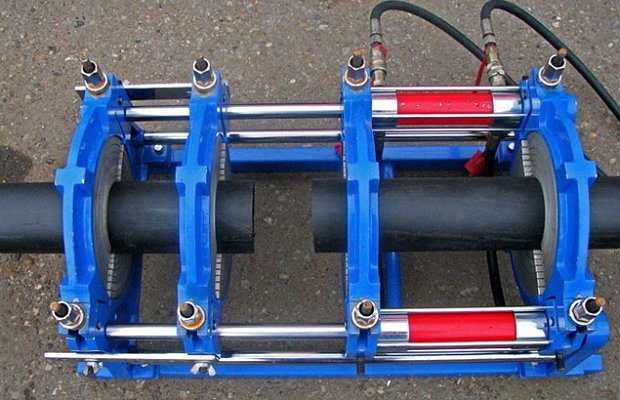

Butt welding of polypropylene products
Also, when carrying out such a procedure, in most cases, it is required to use centering elements. They give the polypropylene parts to be joined the necessary alignment. Socket welding is recommended for pipes with a cross section of less than 6.3 cm. This type of connection requires the use of couplings and fittings. The procedure cannot be performed without them. Fittings, which have special sockets, are used to form various docking nodes (including threaded ones). And the coupling is installed between the two pipes to be welded.
For socket welding of pipes with a cross-section of up to 4 cm, it is allowed to use a hand-held unit. It is equipped with nozzles (heating elements), which are made in the form of a mandrel (it is necessary to melt the inner part of the socket) and a sleeve (melting the outer part).
Heating elements are usually Teflon coated. This non-stick composition perfectly protects the attachments from failure during operation. Clean the hot nozzles after each individual welding operation. For this, wood scrapers or coarse rags (for example, tarpaulin) are used. After the nozzles have completely cooled down, it is impossible to remove the layer of molten polypropylene from them. You will simply ruin the expensive Teflon layer.
Pipe joining movement
Bonding polypropylene products is a simple process, but it requires care and accuracy. In order to do everything right, you need to read the instructions that come with the soldering iron. It is better to carry out all work on soldering pipes in stages.
Let's make a diagram first! The new plumbing begins with the marking of taps, filters, bends and other details. After completing the drawing up of the detailed diagram, it is possible to proceed with the partial assembly of the pipeline. Some parts can be connected without soldering using glue, but others require a special tool. To make the soldering process easy, keep the pipes strictly horizontal.
In order to connect the pipes located vertically, you will need an assistant. The second person should only fix the product in its place, and you will begin to solder after removing the soldering iron from the stand. The last stage is the assembly of the remaining parts into a single structure.An assistant will also come in handy here.
To connect polypropylene products with a diameter of more than 63 cm, butt welding is used. This method of fastening products is considered the most reliable, and no additional parts are needed to carry it out.
Welding polypropylene pipe with fittings
Main steps:
- preparation of the necessary tool.
- drawing up a pipeline plan.
- cutting pipes.
- welding of pipes and fittings.
Fittings and fittings are usually welded to plastic pipes. To do this, you will need a special soldering iron with several nozzles that are suitable in size for the pipe diameters and fittings. Before starting welding, you will need to clean the area where the fitting enters it. For this, the aluminum foil is removed if a pipe with an aluminum layer is used.
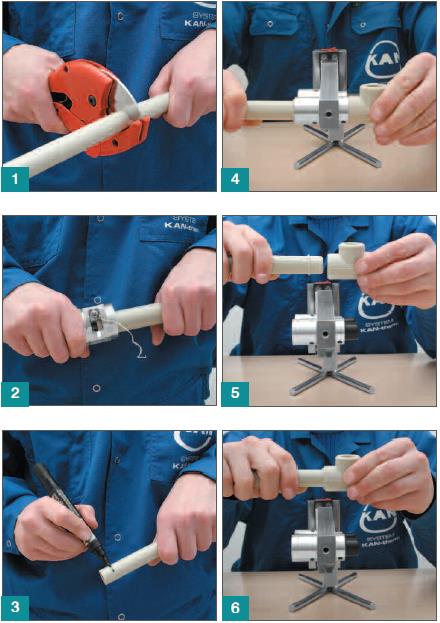

Soldering a polypropylene pipe with a fitting
Then the fittings for polypropylene pipes and the pipe itself are evenly heated with a soldering iron with a suitable nozzle and connected to each other.
When gluing pipe parts and fittings, rotate the parts must be avoided. The soldering of the elements must be securely fixed at the time of their cooling. Otherwise, the connection will be leaky and will leak during operation.
With a combined connection with a metal water supply, a different connection method is required, including both welding and a threaded connection. Typically, such a combined connection is required when connecting plumbing equipment.
First of all, before starting work, you should turn off the risers and drain the water in the system. After that, the old water supply system is dismantled.
To speed up the dismantling of the old water supply system, you can simply use a grinder - cut the old metal pipes into pieces.
The soldering process is shown in detail in the video below.
After the completion of the dismantling work, it is necessary to remove the old valves, clean the part of the water supply line leading to the riser with a cable and start installing a new valve. This will help avoid congestion in the water supply in this old section of the water supply.
Before installation, you must put the filter on the mixer. This will extend the life of the washing machine, which can be connected to the water supply at that location.
After all this, the combination fitting can be installed. The threaded metal part is connected to the mixer, and the plastic part is welded to the pipes.
Fusiotherm apparatus
Cold polypropylene pipes are wound and tightened in their places, after which the joints are processed with the Fusioterm apparatus. If welding of two ends of the products is required, then they must be inserted into a special hole in the apparatus. Then the soldering apparatus is turned on, allowed to warm up to 260 degrees, pipes are inserted into a special hole, withstand a set time, removed and connected.
Advice! The heating temperature must be controlled prior to welding.

